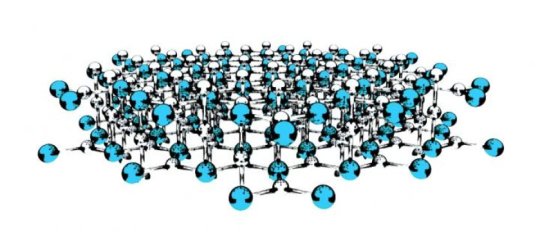[ad_1]
Over the last decade, there has been much excitement about the discovery, recognised by the Nobel Prize in Physics only two years ago, that there are two types of insulators: normal insulators which don’t conduct electricity, and topological insulators — newly discovered materials that conduct electricity only on their edges.
Now, FLEET researchers at Monash University, Australia, have for the first time successfully ‘switched’ a material between these two states of matter via application of an electric-field. This is the first step in creating a functioning topological transistor — a proposed new generation of ultra-low energy electronic devices.
Ultra-low energy electronics such as topological transistors would allow computing to continue to grow, without being limited by available energy as we near the end of achievable improvements in traditional, silicon-based electronics (a phenomenon known as the end of Moore’s Law).
“Ultra-low energy topological electronics are a potential answer to the increasing challenge of energy wasted in modern computing,” explains study author Professor Michael Fuhrer.
“Information and Communications Technology (ICT) already consumes 8% of global electricity, and that’s doubling every decade.”
This new study is a major advance towards that goal of a functioning topological transistor.
HOW IT WORKS: TOPOLOGICAL MATERIALS AND TOPOLOGICAL TRANSISTORS
Topological insulators are novel materials that behave as electrical insulators in their interior, but can carry a current along their edges.
“In these edge paths, electrons can only travel in one direction,” explains lead author Dr Mark Edmonds. “And this means there can be no ‘back-scattering,’ which is what causes electrical resistance in conventional electrical conductors.”
Unlike conventional electrical conductors, such topological edge paths can carry electrical current with near-zero dissipation of energy, meaning that topological transistors could burn much less energy than conventional electronics. They could also potentially switch must faster.
Topological materials would form a transistor’s active, ‘channel’ component, accomplishing the binary operation used in computing, switching between open (0) and closed (1).
“This new switch works on a fundamentally different principle than the transistors in today’s computers,” explains Dr Edmonds. “We envision such switches facilitating a completely new computing technology, which uses lower energy.”
The electric field induces a quantum transition from ‘topological’ insulator to conventional insulator.
To be a viable alternative to current, silicon-based technology (CMOS), topological transistors must:
- operate at room temperature (without the need for expensive supercooling),
- ‘switch’ between conducting (1) and non-conducting (0), and
- switch extremely rapidly, by application of an electric field.”
While switchable topological insulators have been proposed in theory, this is the first time that experiment has proved that a material can switch at room temperature, which is crucial for any viable replacement technology.
(In this study, experiments were conducted at cryogenic temperatures, but the large band-gap measured confirms that the material will switch properly at room temperatures.)
ICT ENERGY USE, THE END OF MOORE’S LAW AND ‘BEYOND CMOS’ SOLUTIONS
The overarching challenge behind the work is the growing amount of energy used in information and communication technology (ICT), a large component of which is driven by switching.
Each time a transistor switches, a tiny amount of energy is burnt, and with trillions of transistors switching billions of times per second, this energy adds up.
For many years, the energy demands of an exponentially growing number of computations was kept in check by ever-more efficient, and ever-more compact CMOS (silicon based) microchips — an effect related to the famous ‘Moore’s Law’. But as fundamental physics limits are approached, Moore’s Law is ending, and there are limited future efficiencies to be found.
“The information technology revolution has improved our lives, and we want it to continue,” says Prof Michael Fuhrer.
“But for computation to continue to grow, to keep up with changing demands, we need more-efficient electronics.”
“We need a new type of transistor that burns less energy when it switches.”
“This discovery is a step in the direction of topological transistors that could transform the world of computation.”
- The energy burnt in computation accounts for 8% of global electricity use
- ICT energy use is doubling every decade
- ICT contributes as much to climate change as the aviation industry
- Moore’s Law, which has kept ICT energy in check for 50 years, will end in the next decade.
[ad_2]















